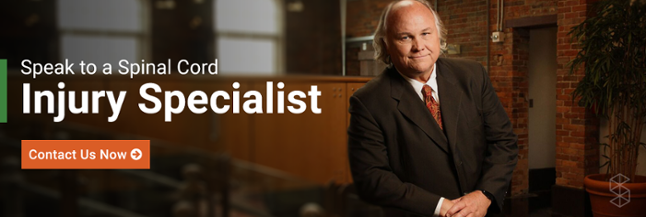C4 vs C6 Spinal Cord Injuries: How to Cope
When you’re dealing with a cervical spinal cord injury (SCI), it is serious and potentially deadly. The cervical spinal cord, which consists of C1-C7 vertebrae at the top end of the spinal column in your neck, also contains the C1-C8 spinal nerves. These types of SCIs are the most severe and can affect one or both sides of your body.

Even though they are located close together on the spinal cord, the C4 and C6 levels of the spinal cord control different functions. Injuries to each of these levels will result in different impacts to mobility and function in the body below in the injury site.
C4 Spinal Cord Injury (Midsection of the Cervical Spine)
This central level of the cervical spine contains nerves that run to the diaphragm, which helps us breathe by contracting and pulling air into the lungs. Often times, when someone has suffered a spinal cord injury at the C4 level or higher, they are paralyzed below the injury site and typically will need 24-hour-a-day assistance breathing from a ventilator. Survivors also often experience paralysis, issues controlling bladder or bowel function, and limited range of motion.
Unfortunately, there is no treatment that can entirely reverse the damage from a spinal cord injury at this level. Rather, medical care is focused on preventing further injury and utilizing existing function.
C6 Spinal Cord Injury (Lower Cervical Vertebrae)
C6 spinal cord injuries occur in the lower third region of the cervical spinal cord. Although these injuries can impact everything below the top of the ribcage and can result in quadriplegia, they still typically have better results than injuries to the upper or middle cervical spine. Some C6 survivors experience control issues relating to their forearms or wrists, while others can still drive with a modified car using hand controls.
Coping with Spinal Cord Injuries
After sustaining a traumatic spinal cord injury, it is important that you make some daily life modifications to aid in your recovery. Some of these modifications can include:
1. Seeking Early, Ongoing Treatment
We cannot stress the importance of seeking early medical intervention and continued specialized treatment after incurring an injury to the spinal cord. This will not only help you to minimize any additional damage but also will help you to retain your current function. There are some new treatments, such as epidural electric stimulation, which has shown promising results in helping some SCI survivors recover limited limb movement. Experimental stem cell research with lab animals also is ongoing to see whether it is possible to regenerate damaged spinal cord tissues.
2. Connecting with Other SCI Survivors
Connecting with other spinal cord injury survivors can play a key role in your recovery. This can be done by meeting with other SCI survivors face-to-face or by connecting with them online if they don’t live nearby. It is important for you to recognize that you are not alone and that there are others who have been where you are now on the road to recovery. People who have suffered similar types of injuries can provide encouragement and support. Additionally, they can make recommendations or give you tips based on how they go about their day-to-day activities while providing experienced insights that no medical professionals can offer.
Some areas that you can discuss include bladder or bowel management, pressure relief tactics, exercises to focus on, and the types of medical supplies/medications or assistive technologies, such as wheelchairs, beds, etc. that they have found most useful. Additionally, you can inquire about any recreational activities or hobbies with which they may be involved post-injury.
3. Engaging in Activity-Based Therapies
Activity-based therapy sessions enable you to enhance your physical health and wellness by getting your body moving with help and to help prevent muscle atrophy. For survivor David Hill, who lost the use of his arms and legs after sustaining a C4-C5 injury, he was able to recover some control of his trunk and his ability to “control front to back and side to side” movement now.
These forms of therapy are integral not only for physical rehabilitation but also for emotional recovery. Depression in SCI survivors ranges between 11% and 37%, according to the University of Washington’s Northwest Regional Spinal Cord Injury System. Your emotions and mental health contribute to your recovery — whether positively or negatively — and having a positive outlook can help you to improve your mood and fight depression.
4. Getting Legal and Financial Support
When you’re facing a mountain of bills due to an injury that may have been caused by someone’s negligence, such as a car accident or a faulty product, it is understandable why you may want to consider seeking compensation for your injuries. This financial support can help to provide you with the funding you need to continue your medical and therapeutic treatments, as well as help to make up for your lost wages and the suffering you experience from your injury. A lawyer specializing in traumatic injuries can help you to assess the situation and determine whether you may have a case.
Check out our free resource guide to discover more ways that you can learn how you can begin coping with a spinal cord injury.
Stay Updated on Advancements On Traumatic Brain &
Spinal Cord Injuries
About the Author





